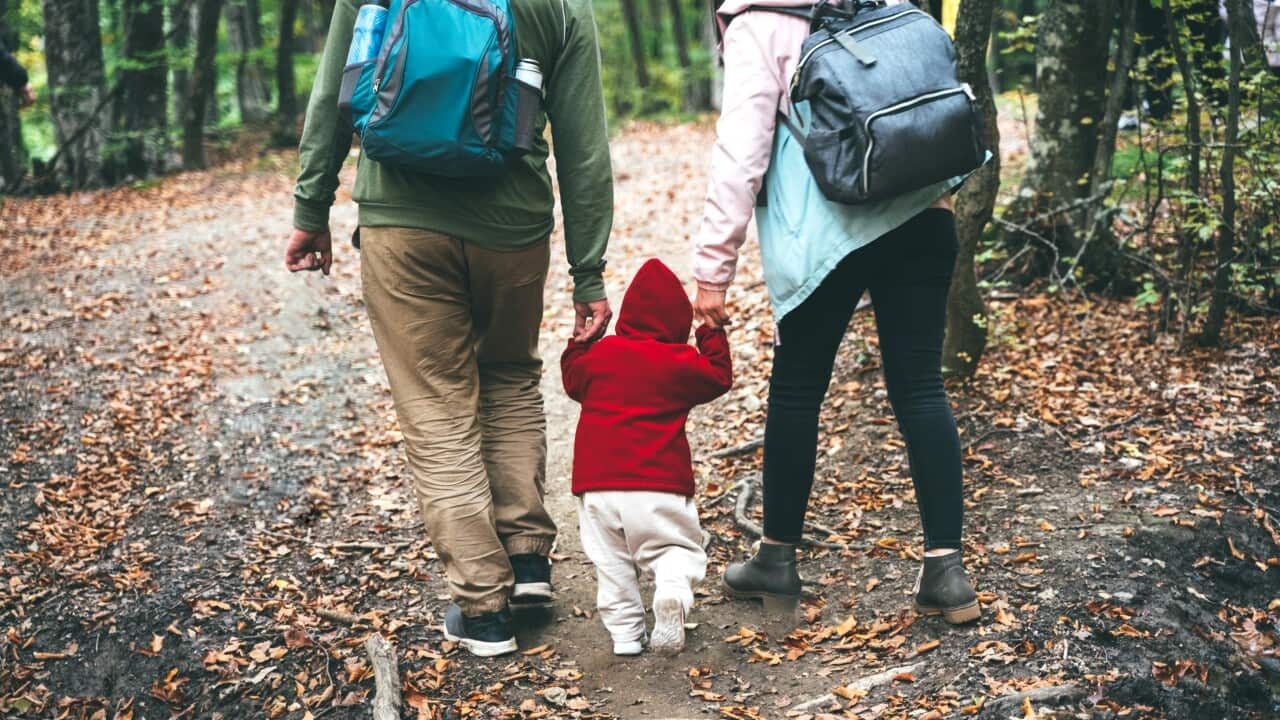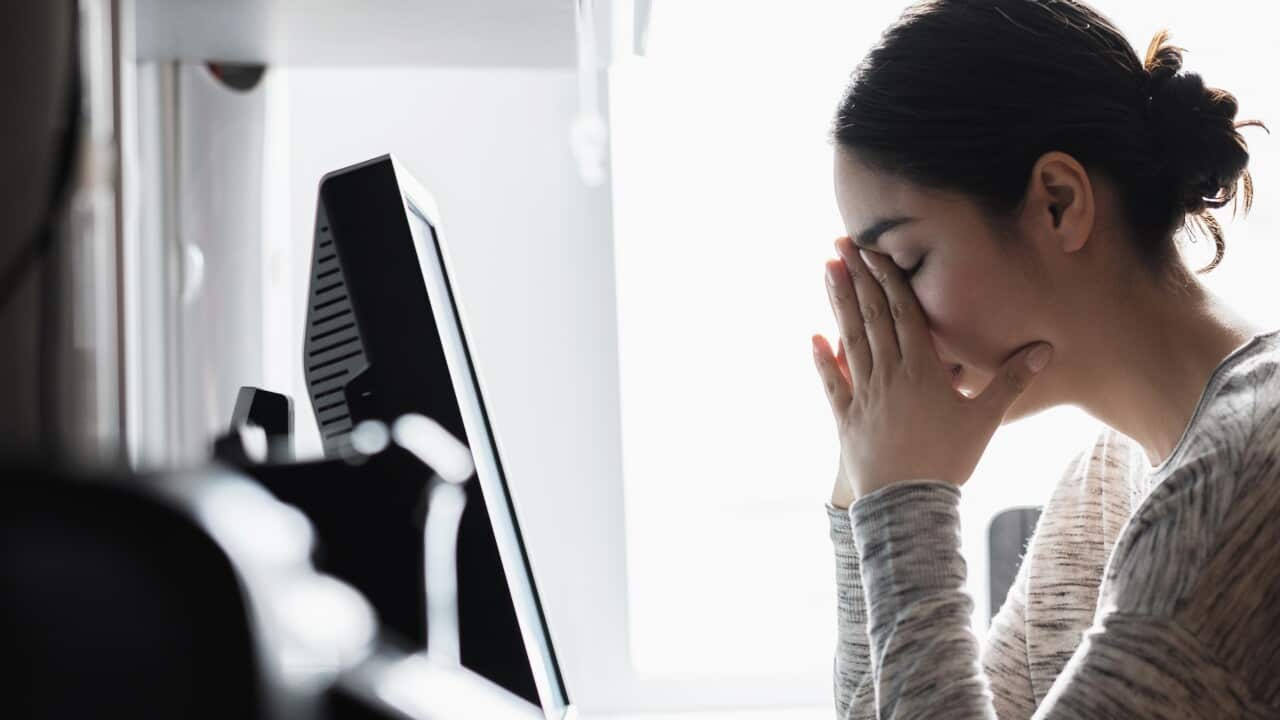For Roya Raad, finding her favourite movies and music didn't come cheap, as she spent dozens of dollars a month on various subscriptions — a common experience for many Australians.
But now the 29-year-old Melburnian and her family have changed their approach by cancelling some of the subscriptions and only keeping the ones they use more regularly.
"We decided that we would just give it a break for some time, where it's Netflix and save some bucks for a couple of months," she told SBS News.
"We decided to cancel cause we felt like we were not getting the benefit out of it."

Roya Raad only keeps the streaming subscriptions that she uses regularly. Source: SBS News / Supplied
"We really budget very carefully. I feel like if that wasn't the case, which I assume for a lot of people that's not necessarily the case, then yes, it [the cost] definitely gets too much and it adds up," she said.
The subscription surge
While Raad has managed to keep her subscription bills at a "manageable" rate, for many Australians, this is not the case.
According to a new report, average monthly spending on subscriptions has increased to a record number, rising by 24 per cent from $63 to $78 in 2025, with each household having an average of 3.7 subscriptions.
Deloitte’s annual Media & Entertainment Consumer Insights report shows that the number of subscriptions per household has risen by 12 per cent since last year and by 61 per cent since 2021.
According to the survey of 2,000 Australian media consumers across five generations, 36 per cent of respondents reported that the money they spend on their subscription is over budget, and 78 per cent expressed concerns about the total cost.
Eighty-three per cent of respondents paid for video streaming platforms, more than half had a music streaming subscription, and one in four paid for sports.
"We live in a world now where we don't own anything, but we subscribe to everything," Chandni Gupta, deputy CEO and digital policy director at Consumer Policy Research Centre (CPRC), told SBS News.
"It's not surprising that those numbers are quite high and that we are paying a lot more than we probably were five or ten years ago."
The 'Hotel California effect'
The report said that the rise in spending is caused by a mix of shifts in market conditions and consumer behaviour.
Over the past years, prices for platforms like Netflix and Spotify have increased multiple times.
"It should be really clear what you are paying for and if prices have gone up, why have they gone up," Gupta said.
"Because there's very little interoperability. It's really hard to suddenly move from one platform to another ... you are often locked in by the service."
But for those Australians like Raad who are trying to cancel their subscription, the process is not as easy as expected, as they find themselves in the "subscription trap".
Subscription trap is a business tactic where a consumer is enticed into a recurring subscription by making it difficult to cancel.
A 2024 CPRC report reveals that nearly half of Australians spend more time than planned trying to cancel their subscriptions, and one in ten give up while attempting to cancel a subscription.
"It's a really unfair system that's been designed very much for profit over people, and it does mean that you are holding onto subscriptions a lot longer than you probably need or want," Gupta said.
"It's also known as the Hotel California effect, which is based on the Eagles song. So you can check out anytime you like, but you can never leave.
"That is very much how these websites have been designed."
Australians 'learning to touch grass'
On the other hand, increased media and entertainment consumption is not among the reasons Australians are paying more for subscriptions.
Deloitte’s report indicates that Australians spent two and a half hours less on media and entertainment compared to 2024, amounting to 42 hours and 45 minutes weekly.
For example, in 2025, Australians spent almost an hour less on streaming video services, according to the report.
Peter Corbett, Deloitte Australia's telecommunications, media and technology lead partner, said: "Time spent engaging with media and entertainment has fallen for a second year in a row, as Australians become increasingly choosy about what they consume."
"Australians are learning to touch grass or disconnect from technology."
He said the reasons for this "isn’t quite clear", but "It could be a mix of factors, including — after a peak in screen time during COVID, consumers are choosing more 'in person' entertainment forms, or changing preferences for the content mix offered across media categories".
Less time scrolling, more desire for creating
The decline was not limited to the media and entertainment sectors. The report shows Australians now spend an average of five hours and 20 minutes on social media weekly, which is a 16 per cent decrease from the 6 hours and 20 minutes they spent scrolling in 2024.
Boomers recorded the highest drop (27 per cent) in social media use, while Gen Z and Millennials also scrolled 14 per cent less.
"The decline in average social media use has eclipsed the broader media and entertainment consumption decline," Corbett said.
"Although the extent of this decline is inconsistent across demographics, as different age groups use social media in different ways for different purposes."
Although social media is declining in popularity in Australia, the report shows that content creation has become more accessible and more popular than ever.
According to the data, one in five Australians has considered becoming a content creator, with money, creative self-expression, and connection/community being their top three reasons for their desire.
The numbers are even higher for Gen Z, with 39 per cent of the generation showing a desire to be a content creator.
Share





